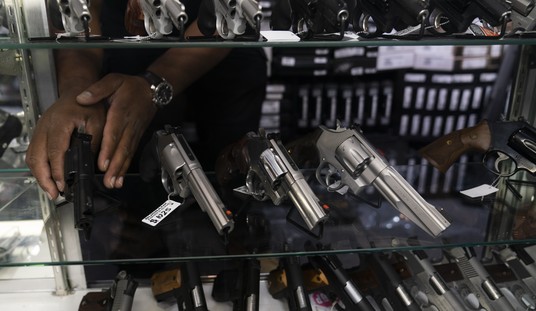A divided en banc panel of judges on the Ninth Circuit Court of Appeals upheld the state of California’s ban on ammunition magazines that can hold more than ten rounds on Monday, declaring that the law “interferes only minimally with the core right of self-defense” while also saving lives.
The decision in Duncan v. Bonta wasn’t exactly unexpected, given the anti-gun majority on the Ninth Circuit, and the head of the California Rifle & Pistol Association says an appeal to the Supreme Court is forthcoming. And given the reasoning used by the court, the prospects of SCOTUS accepting the case are probably higher than normal.
The Ninth Circuit declared in its opinion that the law only required intermediate scrutiny because of its supposed “minimal burden” on the right of self-defense, though several Supreme Court justices have indicated that a “history, text, and tradition” test is the proper guide to determining the constitutionality of gun control laws. In a fiery dissent, Ninth Circuit Judge Lawrence VanDyke took his colleagues to task for trying to excuse away the infringement of a constitutional right, and declared that until the Supreme Court speaks, the Ninth Circuit is going to continue to treat the right to keep and bear arms as a privilege to be doled out by the State.
This case is par for the course. The majority emphasizes the statistical rarity of law-abiding citizens’ need to fire more than an average of 2.2 shots in self-defense, but glosses over the statistical rarity of the harm that California points to as supporting its magazine ban. Instead of requiring the government to make an actual heightened showing, it heavily weighs the government’s claim that guns holding more than 10 rounds are “dangerous” (of course they are— all guns are) against a self-defense interest that the majority discounts to effectively nothing. Once again, our court flouts the Supreme Court’s exhortation against such “a freestanding ‘interest-balancing’ approach” to the Second Amendment.
If the Second Amendment is ever going to provide any real protection, something needs to change. I have some suggestions, which I offer below after first discussing some of the flaws in the majority’s analysis of this case. Until the Supreme Court requires us to implement a paradigm shift, the Second Amendment will remain a second-class right— especially here in the Ninth Circuit.
It should be presumptively unconstitutional to burden constitutional rights. But looking at our court’s cases, you would assume that any burden on the right to bear arms is presumptively permitted. I’ve described before how our circuit’s version of Second Amendment “heightened” scrutiny has no height. It is practically indistinguishable from rational basis review.
VanDyke then went on to chide the Ninth Circuit for its “interest balancing” approach that purports to weigh the need of the State to ensure public safety with the right of its citizens to keep and bear arms.
The brokenness of our court’s balancing approach is particularly evident in this case, where the majority weighs rarity like lead when it favors the ban, but then weighs rarity like helium when it undermines California’s asserted interest. On one hand, the majority ignores the fact that California’s claimed reason for its ban—mass shootings— involves a harm that, while tragic and attention-grabbing, is thankfully extremely rare by any statistical metric. You are much more likely to be randomly injured or killed by a drunk driver than a mass shooter. But on the other hand, the majority emphasizes the rarity of any individual American’s use of ammunition in self-defense, latching onto California’s argument that only 2.2 rounds are used on average in a selfdefense shooting, and concludes that any more rounds than that are thus outside the “core” of the Second Amendment.
We might call this Version 2.2 of the Second Amendment. It cannot be the right way to analyze an alleged violation of the right to bear arms. The average number of times that any law-abiding citizen ever needs to “bear arms” at all in a self-defense situation is far below one—most people will (thankfully) never need to use a gun to defend themselves. Thus, applying the majority’s rarity analysis, possession of a gun itself falls outside the “core” of the Second Amendment. But we know that cannot be true from Heller, where the Supreme Court determined “self-defense . . . was the central component” of the Second Amendment, notwithstanding the practical infrequency of any particular person’s need to actually defend herself with a gun.
So the majority’s rarity balancing isn’t just lopsided—it starts from the wrong premise. We would never treat fundamental rights we care about this way, particularly those expressly enumerated in the Constitution. We don’t protect the free speech of the taciturn less than the loquacious. We don’t protect the free exercise of religion in proportion to how often people go to church. We wouldn’t even allow soldiers to be quartered only in those parts of your house you don’t use much. Express constitutional rights by their nature draw brighter and more prophylactic lines—precisely because those who recognized them were concerned that people like California’s government and the judges on our court will attempt to pare back a right they no longer find useful.
You can read the majority opinion as well as the two separate dissents by Judge VanDyke and Judge Patrick Bumatay here, but give yourself some time to wade through the 170 pages of legal arguments. I don’t think anyone who’s been closely following this case should be shocked by today’s decision, but that has far more to do with the political leanings of the majority of the Ninth Circuit than the validity of the majority’s argument. I’m just keeping my fingers crossed that the Supreme Court will be ready to step in and rectify the Ninth Circuit’s errors when the plaintiffs’ appeal comes before them for consideration.









Join the conversation as a VIP Member